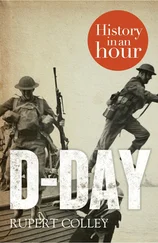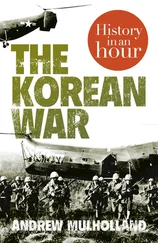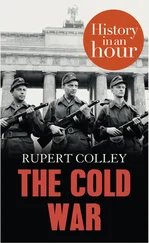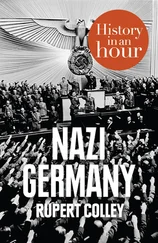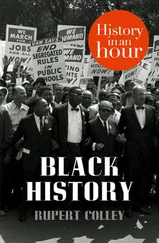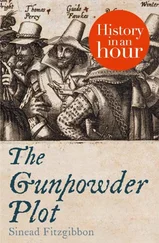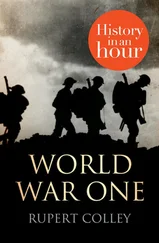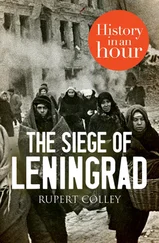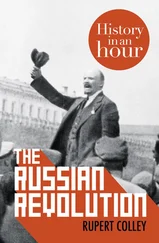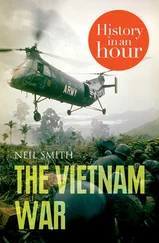THE AFGHAN WARS
History in an Hour
Rupert Colley

About History in an Hour Contents: Cover Title Page About History in an Hour Introduction The First Anglo-Afghan War The Second Anglo-Afghan War The Third Anglo-Afghan War The ‘Saur’ Revolution The Communist Era The Soviet War in Afghanistan The Afghan Civil War The Taliban Afghanistan under the Taliban 9/11 The Afghanistan War The Taliban Insurgency The Death of Bin Laden The Ongoing War Appendix 1: Key Players Appendix 2: Timeline of the Afghan Wars Appendix 3: Flags of Afghanistan Copyright Got Another Hour? About the Publisher
History in an Hour is a series of ebooks to help the reader learn the basic facts of a given subject area. Everything you need to know is presented in a straightforward narrative and in chronological order. No embedded links to divert your attention, nor a daunting book of 600 pages with a 35-page introduction. Just straight in, to the point, sixty minutes, done. Then, having absorbed the basics, you may feel inspired to explore further.
Give yourself sixty minutes and see what you can learn . . .
To find out more visit http://historyinanhour.comor follow us on twitter: http://twitter.com/historyinanhour
Contents:
Cover
Title Page THE AFGHAN WARS History in an Hour Rupert Colley
About History in an Hour
Introduction
The First Anglo-Afghan War
The Second Anglo-Afghan War
The Third Anglo-Afghan War
The ‘Saur’ Revolution
The Communist Era
The Soviet War in Afghanistan
The Afghan Civil War
The Taliban
Afghanistan under the Taliban
9/11
The Afghanistan War
The Taliban Insurgency
The Death of Bin Laden
The Ongoing War
Appendix 1: Key Players
Appendix 2: Timeline of the Afghan Wars
Appendix 3: Flags of Afghanistan
Copyright
Got Another Hour?
About the Publisher Конец ознакомительного фрагмента. Текст предоставлен ООО «ЛитРес». Прочитайте эту книгу целиком, купив полную легальную версию на ЛитРес. Безопасно оплатить книгу можно банковской картой Visa, MasterCard, Maestro, со счета мобильного телефона, с платежного терминала, в салоне МТС или Связной, через PayPal, WebMoney, Яндекс.Деньги, QIWI Кошелек, бонусными картами или другим удобным Вам способом.
Introduction Contents: Cover Title Page THE AFGHAN WARS History in an Hour Rupert Colley About History in an Hour Introduction The First Anglo-Afghan War The Second Anglo-Afghan War The Third Anglo-Afghan War The ‘Saur’ Revolution The Communist Era The Soviet War in Afghanistan The Afghan Civil War The Taliban Afghanistan under the Taliban 9/11 The Afghanistan War The Taliban Insurgency The Death of Bin Laden The Ongoing War Appendix 1: Key Players Appendix 2: Timeline of the Afghan Wars Appendix 3: Flags of Afghanistan Copyright Got Another Hour? About the Publisher Конец ознакомительного фрагмента. Текст предоставлен ООО «ЛитРес». Прочитайте эту книгу целиком, купив полную легальную версию на ЛитРес. Безопасно оплатить книгу можно банковской картой Visa, MasterCard, Maestro, со счета мобильного телефона, с платежного терминала, в салоне МТС или Связной, через PayPal, WebMoney, Яндекс.Деньги, QIWI Кошелек, бонусными картами или другим удобным Вам способом.
In June 2010 America’s war in Afghanistan surpassed the Vietnam War as the longest war in America’s history. American, British and coalition forces have been fighting in Afghanistan since October 2001, a month following the attacks on the Twin Towers in New York. By the end of the year the war seemed won. But a decade on, the ongoing conflict seems far from over.

Map of Afghanistan
Today’s conflict has historical parallels – in the nineteenth century Great Britain twice invaded Afghanistan, in 1839 and 1878. Both times it had seemingly defeated the Afghan forces only to find that the Afghan soldier, not knowing the meaning of defeat, fought back, inflicting humiliating retreats on the mighty British Empire.
A century later, the Soviet Union, technologically and militarily superior, also discovered to its cost that the Afghan was a tenacious foe, impossible to defeat. After a decade of conflict the Soviet Union withdrew, its military reputation in tatters.
Afghanistan has been in a state of constant conflict for almost four decades. When not fighting external enemies, its people have fought against each other. The civil war of 1989 to 1996, during which the Taliban emerged, was ferocious in its intensity.
The coalition forces of today are embroiled in a seemingly unending war. But why are we still fighting in Afghanistan? What are the lessons of history? Who are the Taliban; who are the Mujahideen, and why was Osama bin Laden so significant?
These, in an hour, are the Afghan Wars.
The First Anglo-Afghan War Contents: Cover Title Page THE AFGHAN WARS History in an Hour Rupert Colley About History in an Hour Introduction The First Anglo-Afghan War The Second Anglo-Afghan War The Third Anglo-Afghan War The ‘Saur’ Revolution The Communist Era The Soviet War in Afghanistan The Afghan Civil War The Taliban Afghanistan under the Taliban 9/11 The Afghanistan War The Taliban Insurgency The Death of Bin Laden The Ongoing War Appendix 1: Key Players Appendix 2: Timeline of the Afghan Wars Appendix 3: Flags of Afghanistan Copyright Got Another Hour? About the Publisher Конец ознакомительного фрагмента. Текст предоставлен ООО «ЛитРес». Прочитайте эту книгу целиком, купив полную легальную версию на ЛитРес. Безопасно оплатить книгу можно банковской картой Visa, MasterCard, Maestro, со счета мобильного телефона, с платежного терминала, в салоне МТС или Связной, через PayPal, WebMoney, Яндекс.Деньги, QIWI Кошелек, бонусными картами или другим удобным Вам способом.
In the summer of 1837 the young Victoria ascended the British throne. The Empire was still expanding and at its core gleamed India, the jewel in the crown, the heart of the realm. But to the north-west lay Russia, a rival power with expansionist ambitions. The fear of Russia and Russian influence was a constant factor in Britain’s foreign affairs during the mid-nineteenth century, referred to euphemistically as the ‘Great Game’. When, in 1836, Russia extended her influence into Persia (modern-day Iran), Britain feared for India. Between Persia and India’s north-west frontier lay Afghanistan and it was to this rugged, inhospitable country that Britain turned its attention.
The Amir of Afghanistan, Dost Mohammad Khan (pictured below), had received delegations from both British and Russian dignities. Although the British managed to persuade Dost to decline Russia’s offer of aid, they considered him unreliable and decided that in order to ‘save Afghanistan’ from Russian interference they needed to replace him with someone more compliant to their own needs. The man they had in mind was Shah Shuja, a former king of Afghanistan, who had been deposed in 1809 and remained a figure of loathing throughout the country. But Shuja, now residing at Britain’s expense in India, had the advantage, in Britain’s eyes, of being pro-British.
Читать дальше




